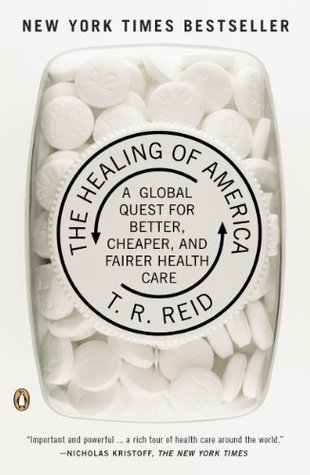More on this book
Community
Kindle Notes & Highlights
by
T.R. Reid
Started reading
October 5, 2017
more than twenty thousand Americans die in the prime of life each year from medical problems that could be treated, because they can’t afford to see a doctor.
Hundreds of thousands of Americans go bankrupt every year because of medical bills.
2010 is designed to increase coverage substantially—but it will still leave about 23 million Americans uninsured.
Kaiser Family Foundation,
In 2000, when a Harvard Medical School professor working at the World Health Organization developed a complicated formula to rate the quality and fairness
of national health care systems around the world, the richest nation on earth ranked thirty-seventh.
The one area where the United States unquestionably leads the world is in spending.
Japanese go to the doctor more than anybody—about fourteen office visits per year, compared with five for the average American. And yet Japan spends about $3,400 per person on health care each year; we burn through $7,400 per person.
exit polls on election day in 2008 showed that nearly 80 percent of voters wanted substantial changes in the U.S. medical system.
The thesis of this book is that we can find cost-effective ways to cover every American by borrowing ideas from foreign models of health care.
The contention is that the United States, with its commitment to free markets and low taxes, could never rely on big-government socialism the way other countries do.
It was a label, at the dawn of the cold war, meant to suggest that anybody advocating universal access to health care must be a communist.
As we’ll see, many foreign countries provide universal health care of high quality at reasonable cost using private doctors, private hospitals, and private insurance plans. Some countries offering universal coverage have a smaller government role than the United States does.
The U.S. Department of Veterans Affairs is one of the world’s purest models of socialized medicine at work.
So the problem isn’t “socialism.” The real problem with those foreign health care systems is that they’re foreign.
In Bismarck countries, both health care providers and payers are private entities.
In this system, health care is provided and financed by the government, through tax payments. There are no medical bills; rather, medical treatment is a public service, like the fire department or the public library. In Beveridge systems, many (sometimes all) hospitals and clinics are owned by the government; some doctors are government employees, but there are also private doctors who collect their fees from the government. These systems tend to have low costs per capita, because the government, as the sole payer, controls what doctors can do and what they can charge.


